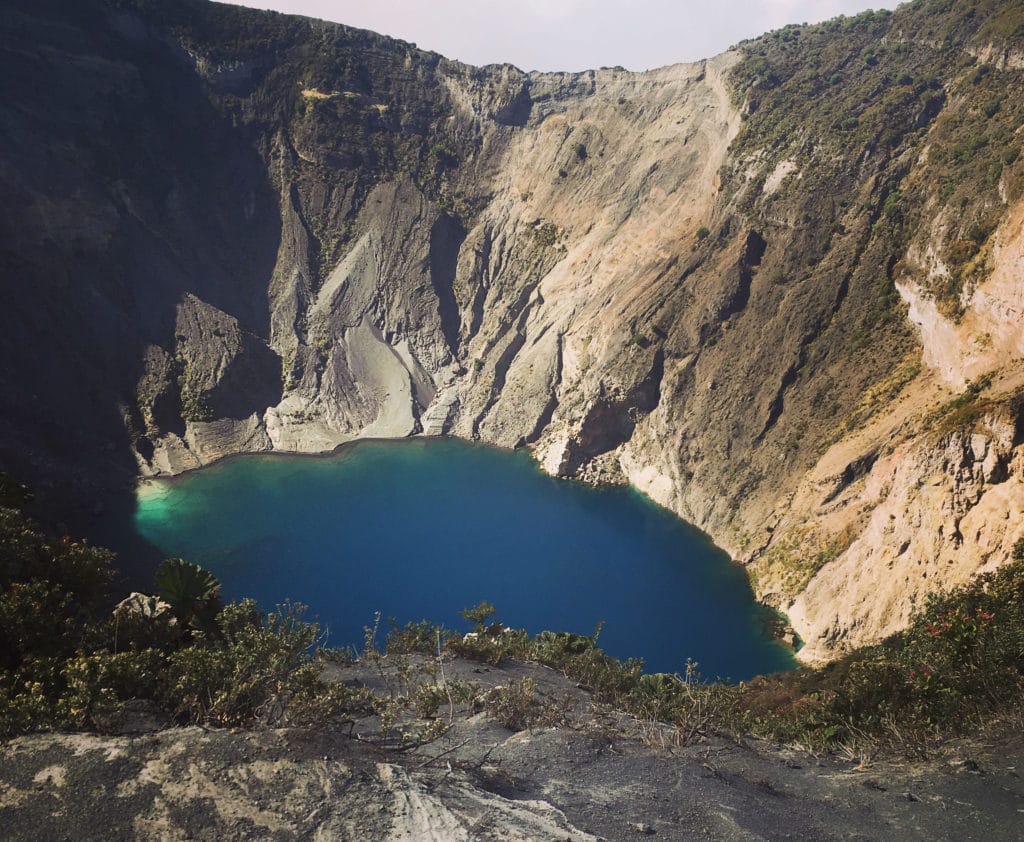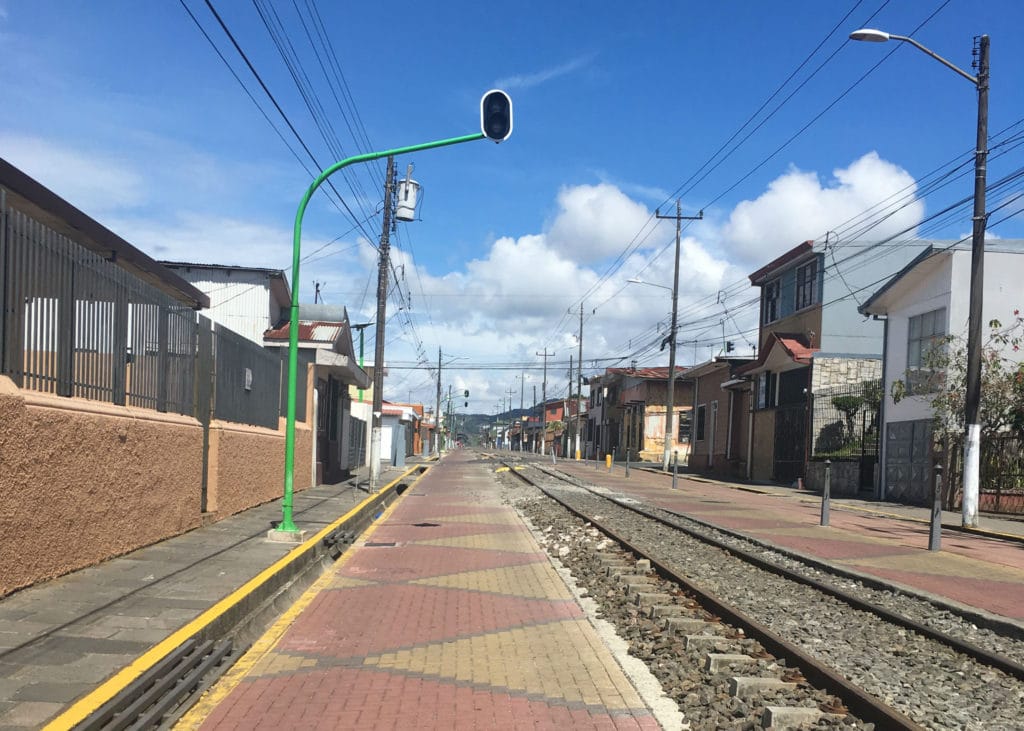You know how it is when you’re staying somewhere new. At first everything is unfamiliar and mysterious, but after a few weeks or more you uncover the little quirks and personalities of your new locale. Some people get accustomed very quickly, and some never do. I think I fall about right in the middle like most people, adjusting at a day-by-day pace
Unearthing these new tidbits of information is the fun part of the journey–and exploring all the surprises that get tossed your way. Sometimes it’s even years later when you discover something new, and more times than not it answers old forgotten questions you had so long ago.
When it comes to Cartago, Costa Rica there are many endearing qualities specific to this city. Like any internet list, all the points are relative. Depending on where you originate, one or more of these characteristics can be either very different or the norm. In no particular order, here are 11 things you should know when you visit Cartago:
The air is damp, even when it’s sunny. Cartago is in a much cooler zone than most of the frequently visited areas of Costa Rica. Even though you get plenty of sunny days, especially in the summer, the air feels full of moisture. After you walk for a while, you’ll notice how quickly you begin to sweat. Even though the humidity isn’t obvious, the air is pretty saturated. If you’re planning on doing a lot of walking (and you will) I highly suggest bringing lightweight clothing as opposed to denim. Jeans will get really heavy after a while and you’ll be uncomfortable. You may become stuffy at night as well. Staying well-hydrated totally helps with this.
Some of the water in the city has an iron smell. In some parts of Cartago, there is a higher level of iron in the water and you can smell it in the shower. It takes a little getting used to, but it’s also normal. Just so you know, the water is completely safe to drink, brush your teeth with, etc.
If you visit Irazu Volcano or Prusia, you need to take a sweater. Yes, I know this is Costa Rica, and it’s located in Central America and Central America is hot. But mountainous areas can be very cool. If you plan an excursion to see Irazu Volcano or to hike Prusia please, please take a sweatshirt or a jacket with you so you comfortably enjoy the sights. The top of Irazu Volcano is fairly windy and the change in temperature from Cartago’s center is great. If you neglect to take a sweater, you’ll be shivering in your shorts, quite literally. The same goes for Prusia–the hiking sector near the volcano. Although the road is steep and you’re hiking, you’ll reach a point where you will be chilly and need warmer clothing.

It’s hard to cross some streets during rush hour. Car ownership has really taken off in Costa Rica in the last few years. Anyone and everyone is driving and the tiny roads have yet to catch up. During rush hours in the morning and afternoons, certain streets can be really hard to cross. Many streets by the Basilica are packed. Be careful because many drivers are cruising along at a pretty good rip with no intention of stopping.
Cartago is less touristy than other places in Costa Rica. The place you’re apt to see the most tourists is in front of the Basilica de Los Angeles. Tours regularly stop there and a lot of people are milling about the park. As far as the rest of Cartago goes, it’s really hit and miss. I’ve seen tourists from time to time in the marketplace. But–less tourists mean less crowds for purchases. It means no tourist traps and genuine Costa Rican cuisine and shopping. It also means you should use local currency. Please bring colones as you would also expect visitors to your country to use native currency. Unless specifically requested, using colones is showing respect and it’s also a LOT more handy for small purchases.
If you’re traveling to Irazu Volcano, prepare for carsickness. If you’re prone to getting carsick, you may have an issue with the ride up the volcano. The road has a lot of twists and turns, and the altitude changes at a frightening pace. Couple this with riding through clouds and mist and you may start to feel nauseated. Don’t let this ruin an amazing experience. Take your Dramamine, bring a cold Coke or keep your car window open a crack (the last two work for me!)
Mist and drizzle in the evenings is common. Again, I can’t emphasize it enough. Cartago can be different from the hotter areas of Costa Rica. If you can think of her like the Seattle of Costa Rica, you’re on the right track. Bringing an anorak or waterproof windbreaker is a really good idea. Even in the summer months of December-March, you are almost 100% likely to experience jacket-worthy misty or cool & windy evenings, even if it’s hot and sunny during the day.

Most of Cartago’s streets are one-way. But not all of them, so keep that in mind. For me, coming from a small town where there were virtually NO one-way streets, it was a bit different. If you come from a larger city you’re probably used to this. There are a few unexpected two-way streets, so be aware.
Calle 3 is the easy way to cross Cartago. Depending on what part of Cartago you’re staying in, Calle 3 or Third Street, is the easiest, most peaceful way to walk across Cartago. It’s serene, quiet and has very little traffic. You’ll also find Cartago’s Museum on Third Street. It’s a nice break from cars and trying to cross busy streets.

Cartago has a loud train that passes through beginning very early in the morning. Depending on where you’re staying in Cartago, the train headed towards San Jose begins running at about 5:10am. The Los Angeles neighborhood (near the Basilica) gets the full brunt of its blaring horn at the crack of dawn. However, you won’t find it running so early on weekends or at all during Semana Santa (Holy Week). For me personally, the train doesn’t bother me. It’s a reminder, albeit a loud one, that I’m in Costa Rica! Yay! In the last year, however, they have installed sensors with traffic lights that start ringing as the train approaches. These ringers are more annoying than the train, if you want the truth. Just sayin’.
A lot of businesses close early in Cartago. Cartago isn’t San Jose. San Jose is full of night clubs and other establishments that are open into the predawn hours. This is not the case in Cartago. It’s been referred to as a bedroom community, although I don’t think that’s accurate. There’s just too many activities, restaurants and a young population in Cartago for that. However, most stores and businesses close earlier and people are at home with their families. There are some restaurants that stay open a bit later for those who need to grab a late bite, such as La Puerta del Sol (closes at 10pm), Moe’s Pub Rock (closes at 1am) and Subway near the Plaza Mayor (closes at midnight). These are all within walking distance if you’re in downtown Cartago. There are others such as El Sitio (open ’til 2:30am) and Malanga Fusion Caribe (open ’til 10pm on Friday and Saturday). These two are located in the San Blas region and you’ll need transportation.
Cartago is a great stop for your itinerary. There is so much to do there, and it’s off the tourist’s beaten path. The people are warm and very welcoming to visitors. It’s a great walking city and there’s plenty of shopping and restaurants. If you’ve visited Cartago and have a favorite restaurant or hang-out, I’d love to hear about it in the comments below.





